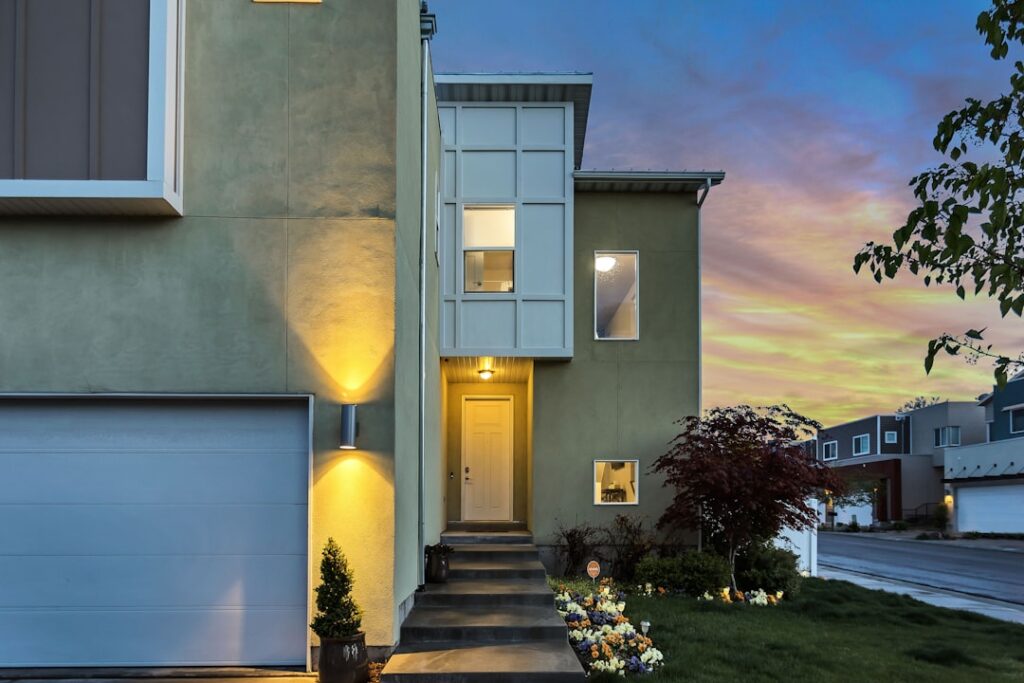Exterior painting is a crucial aspect of transforming the look of a home. The exterior of a house is the first thing that people see, and it sets the tone for the entire property. A fresh coat of paint can instantly update and modernize the appearance of a home, making it more appealing and inviting. Not only does exterior painting enhance the aesthetic appeal of a house, but it also provides protection against the elements, preventing damage and deterioration.
When it comes to home improvement projects, exterior painting is one of the most cost-effective options. Compared to other renovations such as remodeling or adding extensions, painting the exterior of a house is relatively affordable. It can provide a significant return on investment by increasing the value of the property and attracting potential buyers if you decide to sell in the future. With proper planning and execution, exterior painting can give your home a fresh new look without breaking the bank.
Choosing the Right Color Palette
Choosing the right color palette for your home’s exterior is crucial in creating a cohesive and visually appealing look. The color scheme should complement the architectural style of your home as well as its surroundings. Consider factors such as the color of neighboring houses, landscaping, and natural elements like trees and flowers.
Start by researching different color combinations that work well with your home’s architectural style. For example, if you have a traditional-style home, earthy tones like beige, brown, or gray may be suitable. On the other hand, if you have a modern-style home, bold and vibrant colors like blue or red can make a statement.
It’s also important to consider the existing colors on your property, such as the roof or any permanent fixtures. Choose colors that harmonize with these elements rather than clash with them. Additionally, take into account any homeowner association rules or local regulations that may restrict certain color choices.
Preparing Your Home’s Exterior for Painting
Properly preparing your home’s exterior for painting is essential to ensure a long-lasting and professional-looking finish. Start by thoroughly cleaning the surface to remove dirt, grime, and any loose paint. Use a pressure washer or a scrub brush and detergent to clean the walls, making sure to rinse thoroughly.
Next, inspect the exterior for any cracks, holes, or damaged areas. Repair these issues before painting to ensure a smooth and even surface. Fill in cracks with caulk or putty, and patch any holes with a suitable filler. Sand down rough areas and scrape off any loose paint.
Once the surface is clean and repaired, it’s important to prime it before applying the paint. Primer helps the paint adhere better and provides an even base for the color. Choose a primer that is suitable for your specific surface, whether it’s wood, stucco, or brick.
Exterior Painting Techniques
There are several techniques you can use when painting the exterior of your home: brushing, rolling, and spraying. Each technique has its advantages and disadvantages, so it’s important to choose the one that suits your needs and preferences.
Brushing is the most traditional method of painting and allows for precise control over the application of paint. It is ideal for smaller areas or detailed work such as trim or windows. However, it can be time-consuming and labor-intensive, especially for larger surfaces.
Rolling is a faster method that covers larger areas more quickly. It is suitable for flat surfaces such as walls or siding. Use a roller with a long handle to reach high areas without the need for ladders or scaffolding. However, rolling may not provide as smooth of a finish as brushing, especially on textured surfaces.
Spraying is the fastest method of painting and provides an even coat of paint in less time. It is ideal for large surfaces or when you want to cover a large area quickly. However, spraying requires more skill and equipment, and it can result in overspray if not done properly. It is recommended to use a sprayer for professional painters or those with experience.
Choosing the Right Type of Paint
Choosing the right type of paint for your home’s exterior is crucial in ensuring durability and longevity. There are several types of paint available, each with its own advantages and disadvantages.
Latex paint is the most common choice for exterior painting. It is water-based, dries quickly, and is easy to clean up. Latex paint is also flexible, allowing it to expand and contract with temperature changes without cracking or peeling. It is suitable for most surfaces and provides a long-lasting finish.
Oil-based paint is another option, although it is less commonly used nowadays due to its strong odor and longer drying time. However, oil-based paint provides a more durable and smoother finish than latex paint. It is ideal for surfaces that require extra protection, such as wood or metal.
Acrylic paint is a newer type of paint that combines the benefits of both latex and oil-based paints. It has a quick drying time, easy cleanup, and durability similar to oil-based paint. Acrylic paint is also resistant to fading and cracking, making it suitable for areas with harsh weather conditions.
DIY vs. Hiring a Professional
Deciding whether to tackle exterior painting as a DIY project or hire a professional depends on several factors. DIY painting can save money on labor costs but requires time, effort, and skill. If you have experience with painting and feel confident in your abilities, DIY may be a viable option.
However, hiring a professional painter has its advantages. Professionals have the necessary skills, tools, and experience to ensure a high-quality finish. They can also provide valuable advice on color selection, surface preparation, and maintenance. Hiring a professional can save time and ensure that the job is done efficiently and effectively.
Consider your budget, time constraints, and level of expertise when deciding between DIY and hiring a professional. If you have a large or complex project, it may be worth investing in professional help to achieve the best results.
Exterior Painting Safety Tips
Safety should always be a top priority when it comes to exterior painting. Here are some important safety tips to keep in mind:
– Wear protective clothing, including goggles, gloves, and a mask, to protect yourself from paint fumes and chemicals.
– Use proper equipment such as ladders or scaffolding to reach high areas safely. Make sure they are stable and secure before climbing.
– Avoid painting in extreme weather conditions such as high winds or extreme heat, as it can affect the quality of the paint and pose safety risks.
– Protect surrounding areas such as windows, doors, and landscaping with drop cloths or plastic sheeting to prevent accidental paint splatters or damage.
– Follow manufacturer instructions for proper use and disposal of paint and painting materials.
Maintaining Your Home’s Exterior Paint
Proper maintenance is crucial in preserving the appearance and durability of your home’s exterior paint. Regular cleaning and inspections can help identify any issues before they become major problems.
Clean the exterior of your home at least once a year to remove dirt, dust, and mildew. Use a mild detergent and a soft brush or sponge to scrub the surface gently. Rinse thoroughly with water to remove any residue.
Inspect the paint for any signs of peeling, cracking, or fading. Touch up any small areas as soon as possible to prevent further damage. If larger areas need repainting, consider hiring a professional for the best results.
Regularly trim trees and shrubs near your home to prevent them from rubbing against the paint and causing damage. Keep gutters clean to prevent water from overflowing onto the walls and causing moisture-related issues.
Enhancing Your Home’s Curb Appeal
Exterior painting is an excellent way to enhance your home’s curb appeal and make it stand out in the neighborhood. Here are some tips to help you choose colors and techniques that will make your home look its best:
– Consider the architectural style of your home and choose colors that complement its design. For example, a Victorian-style home may look stunning with a combination of pastel colors, while a modern-style home may benefit from bold and contrasting colors.
– Use accent colors to highlight architectural features such as trim, doors, or shutters. This can add depth and visual interest to your home’s exterior.
– Take inspiration from your surroundings, such as the natural landscape or neighboring houses. Choose colors that harmonize with the environment rather than clash with it.
– Consider the overall color scheme of your neighborhood. While you want your home to stand out, you also want it to blend in with the surrounding houses.
Exterior painting is a cost-effective way to transform the look of your home and increase its value. By choosing the right color palette, preparing the surface properly, and using the right techniques and paint, you can achieve a professional-looking finish that will last for years.
Whether you decide to tackle the project yourself or hire a professional, make sure to prioritize safety and proper maintenance. Regularly inspect and clean your home’s exterior to prevent damage and keep it looking its best.
By enhancing your home’s curb appeal through exterior painting, you can create a welcoming and visually appealing space that you can be proud of. Consider exterior painting as an investment in your home’s appearance and enjoy the benefits for years to come.
If you’re considering an exterior painting project for your home, you may also be interested in learning more about stucco repair and repainting. Stucco is a popular choice for many homeowners due to its durability and aesthetic appeal. However, over time, stucco can develop cracks or other damage that may require repair before painting. Our article on stucco repair and repainting provides valuable insights and tips on how to restore the beauty of your stucco exterior. Check it out here for expert advice from professional painters in McDonough.



